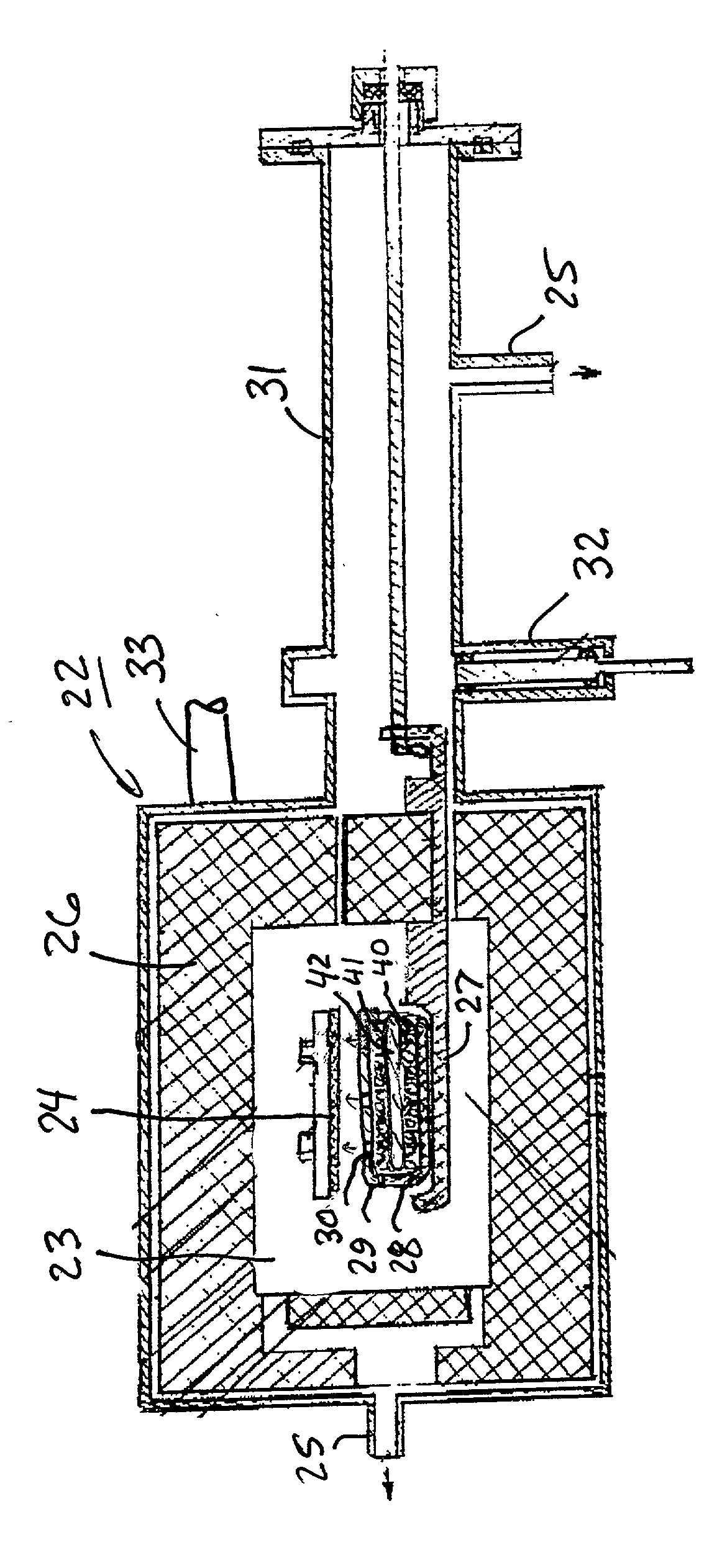Method of producing silicon carbide power
a technology of silicon carbide and power, which is applied in the direction of crystal growth process, single crystal growth details, condensed vapor, etc., can solve the problems of serious limitations on the industrial potential of this remarkable material, difficult to obtain the required grain size and/or uniformity with these known processes, and reduce the cost of production and time. , to prevent or minimize the condensation of silicon vapor, prevent or minimize the effect of silicon vapor condensation
- Summary
- Abstract
- Description
- Claims
- Application Information
AI Technical Summary
Benefits of technology
Problems solved by technology
Method used
Image
Examples
example 1
[0026] In this example, the carbon particles 41 are finely-divided particles of charcoal having a particle size of 50-250 microns; and the silicon particles 40 introduced in the bottom of the crucible 28 are finely-divided particles of relatively pure silicon obtained from the waste of silicon semiconductor wafers, both the mono-crystalline and the poly-crystalline type, resulting from the production of semiconductor devices and ground to a fine particle size. This example used a 10% excess of silicon particles by weight over the carbon particles, namely 1.0 kilogram of carbon particles and 1.10 kilogram of silicon particles. The silicon is relatively pure elemental silicon but may include traces of dopants or impurities as present in silicon semiconductor wafers.
[0027] The interior of the oven 23 is evacuated to a pressure of 10.sup.-3 Torr and heated to a temperature of 1550.degree. C.-1600.degree. C. for a period of 30 minutes. During this period, the silicon particles 40 vaporiz...
example 2
[0029] This example is the same as in Example 1, except that the sample is heated to a higher temperature of 1600.degree. C. for 45 minutes, rather than a temperature of 1800.degree. C. for 30 minutes. The rest of the procedure is substantially the same as in Example 1.
example 3
[0030] This example is also the same as Example 1, except that the sample is heated to a temperature of 2200.degree. C. in the furnace for a period of about 15 minutes, rather than a temperature of 1800.degree. C. for 30 minutes as in Example 1. The remainder of the procedure is the same as in Example 1.
PUM
| Property | Measurement | Unit |
|---|---|---|
| temperature | aaaaa | aaaaa |
| temperature | aaaaa | aaaaa |
| temperature | aaaaa | aaaaa |
Abstract
Description
Claims
Application Information
 Login to View More
Login to View More - R&D
- Intellectual Property
- Life Sciences
- Materials
- Tech Scout
- Unparalleled Data Quality
- Higher Quality Content
- 60% Fewer Hallucinations
Browse by: Latest US Patents, China's latest patents, Technical Efficacy Thesaurus, Application Domain, Technology Topic, Popular Technical Reports.
© 2025 PatSnap. All rights reserved.Legal|Privacy policy|Modern Slavery Act Transparency Statement|Sitemap|About US| Contact US: help@patsnap.com

